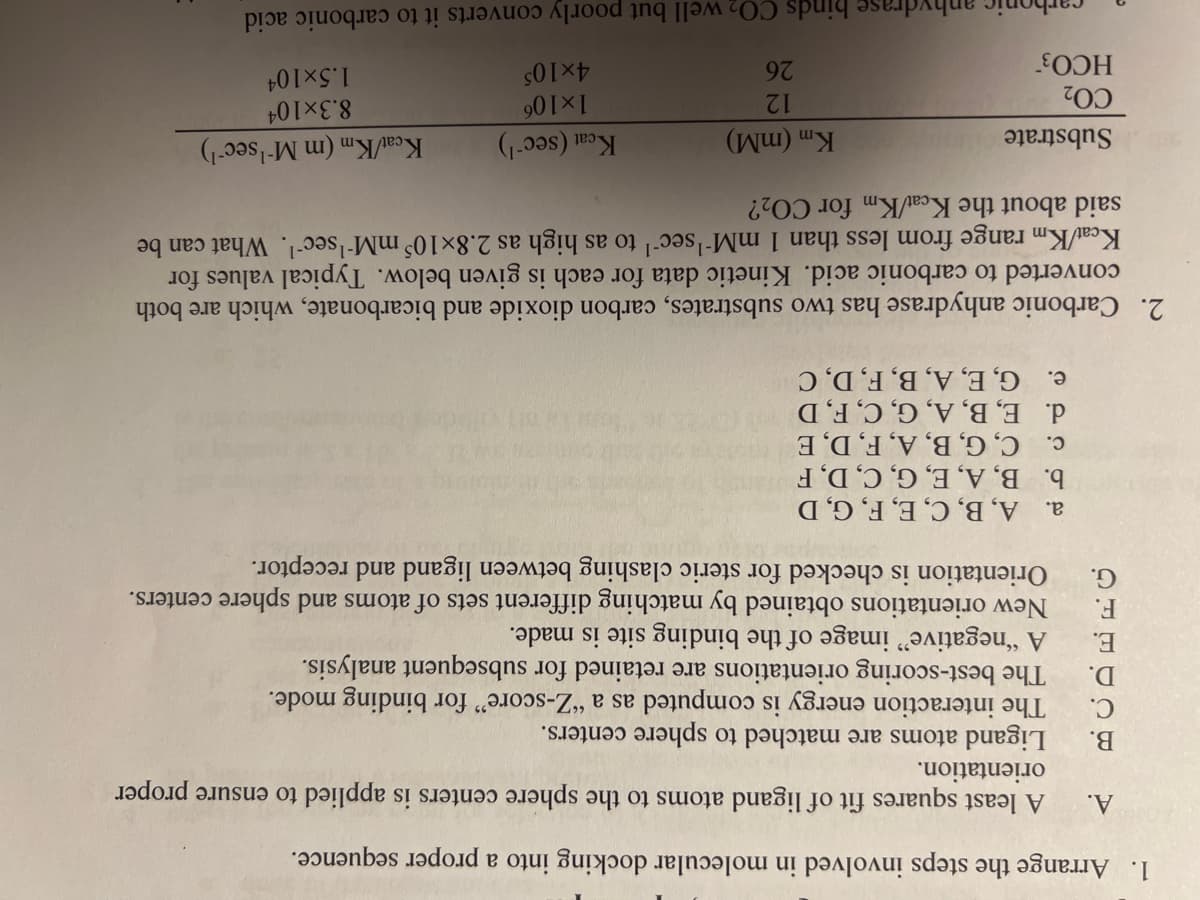Organic Chemistry
8th Edition
ISBN:9781305580350
Author:William H. Brown, Brent L. Iverson, Eric Anslyn, Christopher S. Foote
Publisher:William H. Brown, Brent L. Iverson, Eric Anslyn, Christopher S. Foote
Chapter20: Dienes, Conjugated Systems, And Pericyclic Reactions
Section: Chapter Questions
Problem 20.48P
Related questions
Question
Number 1 please

Transcribed Image Text:1. Arrange the steps involved in molecular docking into a proper sequence.
A least squares fit of ligand atoms to the sphere centers is applied to ensure proper
orientation.
В.
A.
C.
Ligand atoms are matched to sphere centers.
The interaction energy is computed as a "Z-score" for binding mode.
The best-scoring orientations are retained for subsequent analysis.
A “negative" image of the binding site is made.
D.
Е.
F.
New orientations obtained by matching different sets of atoms and sphere centers.
G.
Orientation is checked for steric clashing between ligand and receptor.
a. A, B, C, E, F, G, D
b. B, A, E, G, C, D, F
d. E, B, A, G, C, F, D
e. G, E, A, B, F, D, C
2. Carbonic anhydrase has two substrates, carbon dioxide and bicarbonate, which are both
converted to carbonic acid. Kinetic data for each is given below. Typical values for
Kcat/Km range from less than 1 mM-'sec-l to as high as 2.8x10$ mM-'sec-'. What can be
said about the Kcat/Km for CO2?
Substrate
CO2
HCO3
Kca/Km (m M-'sec-)
8.3x104
1.5x104
Km (mM)
Keat (sec-!)
12
1x106
26
4x105
binds CO2 well but poorly converts it to carbonic acid
Expert Solution
This question has been solved!
Explore an expertly crafted, step-by-step solution for a thorough understanding of key concepts.
This is a popular solution!
Trending now
This is a popular solution!
Step by step
Solved in 3 steps

Knowledge Booster
Learn more about
Need a deep-dive on the concept behind this application? Look no further. Learn more about this topic, chemistry and related others by exploring similar questions and additional content below.Recommended textbooks for you

Organic Chemistry
Chemistry
ISBN:
9781305580350
Author:
William H. Brown, Brent L. Iverson, Eric Anslyn, Christopher S. Foote
Publisher:
Cengage Learning

Organic Chemistry
Chemistry
ISBN:
9781305580350
Author:
William H. Brown, Brent L. Iverson, Eric Anslyn, Christopher S. Foote
Publisher:
Cengage Learning